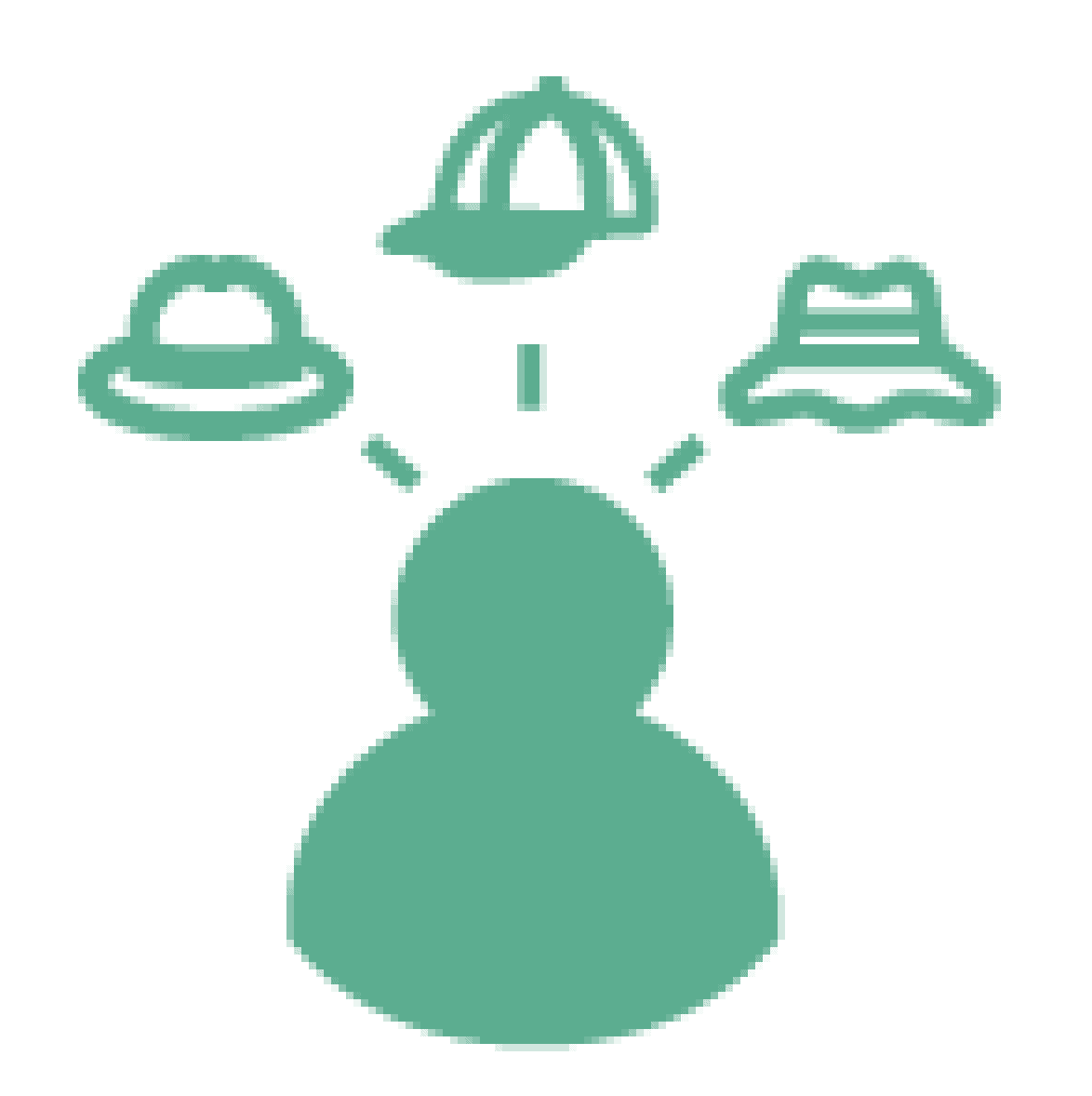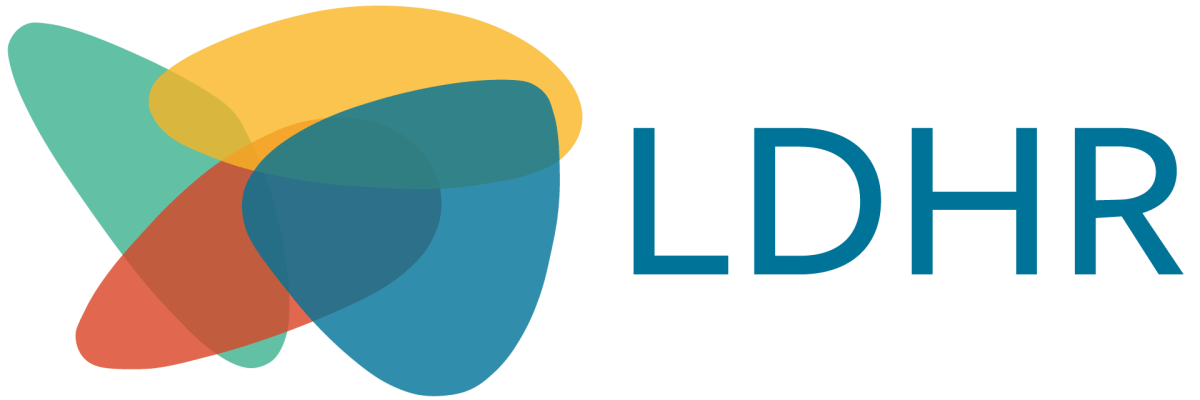
Leadership Framework
This resource was developed from a study of a number of highly effective leaders within Cru/Campus Crusade for Christ (CCC). It combines the requirements of both spiritual and strategic leadership in light of our calling and identifies what is critical for leaders in our organization.
You can grow and improve as a leader by applying the roles and responsibilities of the framework to your context. Feel free to adapt or adjust the resources so they are helpful to you.



We must develop leaders. That is part of our stewardship of the people God has entrusted to us – to help them become the best they can be. Likewise, the mission demands an increasing base of leadership for the current reality and the future. Our desire is each team member, disciple, or participant in mission grows into Christ-like maturity and increasing ability to minister and multiply.
This resource outlines a number of different aspects of leadership:
- Heart – Our relationship with God
- Relationships – character and quality of our relationships
- Roles – how we think and what we do
- Responsibilities – or influence skills, needed in each role
- Results/Stewardship – the categories for evaluating our effectiveness
Each element of the Framework has:
- an Overview that explains the purpose (outcomes) of the session, the key resonating ideas, and slides of the PowerPoint presentation, some preparation tips, and a review of the additional resources for the session. It will be helpful if you read this page first for each session.
- a slide Presentation that you can use or adapt to meet your needs. There are ample notes included in each presentation and interactive activities to facilitate learning.
- an Article (or a few) to read about the topic, and
- Additional Materials and resources for deeper study and understanding.
Overview: Leadership Framework Introduction (helpful session guide)
Presentation: Leadership Framework Introduction
The Heart of the Leader
Your relationship with God is central to your life and leadership. “For apart from Me, you can do nothing.” John 15:5
In the Bible, the core essence of the person is summed up in the word “heart.” We use the phrase, “heart of a leader,” to capture our relationship with God and the essential character and personal qualities essential to leadership.
Overview: Heart of the Leader (helpful session guide)
The Relationships of a Leader is the foundational category of our framework and flows from the “Heart” of the leader. Your personal character and qualities and your relationships with others form the base from which you lead.
Overview: The Relationships of the Leader (helpful session guide)
Presentation: The Relationships of a Leader
There are four roles in the Leadership Framework: Direction Setter, Change Agent, Coach, and Spokesperson. These four roles describe how you think and what you do as a leader.
The Direction Setter
A Direction Setter continually thinks about the future of the organization and about what needs to happen to accomplish the mission—to win, build, send, and multiply Christ-centered disciples who launch spiritual movements.
Overview: Direction Setter
Presentation: Direction Setter
Article: Strategic Planning Process
Additional Resources:
CCCI Global Direction
Article: Shaping our Future Together
Local Movement Indicators
Movement 360 Evaluation
Direction Setter Bible Study
The Change Agent
A Change Agent is responsible for leading the team in identifying and removing obstacles that might keep them from achieving the mission. This person looks ahead to new trends and opportunities and takes the time to lead the team in doing the evaluation, research, and testing that is required to keep the team on the cutting edge of accomplishing the mission. With creativity and attention to changes in the environment of the audience they are trying to reach, the Change Agent leads the adaptation to changing conditions in pursuit of mission and vision.
Overview: Change Agent
Presentation: Change Agent
Article: PrEFACE
Article: Leading Change-The Eight Stage Process Summary
Additional Resources:
Article: Vision-led Change
The OU Case Study
The Coach
In the Coach Role, the leader builds the team, ensures that the right person is doing the right job, creates an environment for growth, and coaches individual team members for growth and effectiveness for the mission, using coaching skills and processes.
Overview: Coach
Presentation: Coach
Coaching Bridge
Team Member Types
Team Member Types Chart
Additional Resources:
Article: Effective Coaching
Article: How Jesus Developed People
The Spokesperson
The Spokesperson is responsible for communicating and representing the mission to those outside the organization or outside of your team. As Spokesperson, the leader takes the initiative to build a network and manages the various, crucial relationships that are essential to the mission.
Overview: Spokesperson
Presentation: Spokesperson
Paul Eshelman video: Spokesperson
Paul Eshelman talk notes: Spokesperson
Additional Resources:
Article: Principles of Partnership
Article: Keys to Effective Partnering
No matter which role you are operating from, there are four Responsibilities, or influence skills, needed in each role. For example, a leader in the Coach role will need to cast vision, have a strategy, align, and motivate people to be encouraged and equipped to live out the mission. These four Responsibilities are Aligning, Motivating, Vision Casting, and Strategy Formulation.
Aligning
Aligning is inviting others to join in through involvement or direct invitation; it is the ability to bring all of your people and structures together, pulling in the same direction, in order to carry out the strategies and accomplish the vision.
Overview: Aligning
Presentation: Aligning
Strategic Partner Analysis
Article: Building Alignment
Motivating
Motivating is helping others push onward to reach the mission, even when it is difficult; it is shaping the morale of the team so there is positive energy for each person to maximize their contribution to the mission.
Overview: Motivating
Presentation: Motivating
Additional Resources
Vision Casting
Vision Casting is communicating to others a picture of the preferred future in an emotionally compelling way. What will it look like when the vision is achieved?
Overview: Vision Casting
Presentation: Vision Casting
Article: Catching, Cultivating, and Casting Vision
Article: The Leader as Painter
Article: Vision-led Charge
Strategy Formulation
Strategy Formulation is collaborating with team members, empowering them to develop significant actions or tactics for a plan to accomplish the mission; it is helping people know how to get to the goal.
Overview: Strategy Formulation
Presentation: Strategy Formulation
Article: Strategic vs Tactical Planning
Article: Strategic Formulation Focus
Results
Leaders pursue results. Results establish the categories for evaluating our effectiveness. Our vision is “Movements Everywhere”, and the Local Movement Indicators represent essential faith actions and fruit we are looking for to measure our progress toward our vision. Other levels of the organization have different measures according to the stewardship of that part of the organization.
Overview: Results (helpful session guide)
Presentation: Results
Additional Resources:
Article: Leading and Results
Article: Why Measure?
Article: Results Categories to Address
Case Study: The University of Oklahoma
Video: Three Critical Reasons Why We Measure Ministry – by Steve Douglass
Stewardship
Wise stewardship (Matthew 25) implies both good management and capacity growth for the future. Our under-girding assumption is that we, as organizational leaders, are stewards of all that is entrusted to us: our calling and direction, people, finances, technology, property, time, and talents.
Overview: Stewardship (helpful session guide)
Presentation: Stewardship
Article: The Leader as Steward
Article: The Steward Leader
We must develop leaders. That is part of our stewardship of the people God has entrusted to us – to help them become the best they can be. Likewise, the mission demands an increasing base of leadership for the current reality and the future. Our desire is each team member, disciple, or participant in mission grows into Christ-like maturity and increasing ability to minister and multiply.
This resource outlines a number of different aspects of leadership:
- Heart – Our relationship with God
- Relationships – character and quality of our relationships
- Roles – how we think and what we do
- Responsibilities – or influence skills, needed in each role
- Results/Stewardship – the categories for evaluating our effectiveness
Each element of the Framework has:
- an Overview that explains the purpose (outcomes) of the session, the key resonating ideas, and slides of the PowerPoint presentation, some preparation tips, and a review of the additional resources for the session. It will be helpful if you read this page first for each session.
- a slide Presentation that you can use or adapt to meet your needs. There are ample notes included in each presentation and interactive activities to facilitate learning.
- an Article (or a few) to read about the topic, and
- Additional Materials and resources for deeper study and understanding.
Overview: Leadership Framework Introduction (helpful session guide)
Presentation: Leadership Framework Introduction
The Heart of the Leader
Your relationship with God is central to your life and leadership. “For apart from Me, you can do nothing.” John 15:5
In the Bible, the core essence of the person is summed up in the word “heart.” We use the phrase, “heart of a leader,” to capture our relationship with God and the essential character and personal qualities essential to leadership.
Overview: Heart of the Leader (helpful session guide)
The Relationships of a Leader is the foundational category of our framework and flows from the “Heart” of the leader. Your personal character and qualities and your relationships with others form the base from which you lead.
Overview: The Relationships of the Leader (helpful session guide)
Presentation: The Relationships of a Leader
There are four roles in the Leadership Framework: Direction Setter, Change Agent, Coach, and Spokesperson. These four roles describe how you think and what you do as a leader.
The Direction Setter
A Direction Setter continually thinks about the future of the organization and about what needs to happen to accomplish the mission—to win, build, send, and multiply Christ-centered disciples who launch spiritual movements.
Overview: Direction Setter
Presentation: Direction Setter
Article: Strategic Planning Process
Additional Resources:
CCCI Global Direction
Article: Shaping our Future Together
Local Movement Indicators
Movement 360 Evaluation
Direction Setter Bible Study
The Change Agent
A Change Agent is responsible for leading the team in identifying and removing obstacles that might keep them from achieving the mission. This person looks ahead to new trends and opportunities and takes the time to lead the team in doing the evaluation, research, and testing that is required to keep the team on the cutting edge of accomplishing the mission. With creativity and attention to changes in the environment of the audience they are trying to reach, the Change Agent leads the adaptation to changing conditions in pursuit of mission and vision.
Overview: Change Agent
Presentation: Change Agent
Article: PrEFACE
Article: Leading Change-The Eight Stage Process Summary
Additional Resources:
Article: Vision-led Change
The OU Case Study
The Coach
In the Coach Role, the leader builds the team, ensures that the right person is doing the right job, creates an environment for growth, and coaches individual team members for growth and effectiveness for the mission, using coaching skills and processes.
Overview: Coach
Presentation: Coach
Coaching Bridge
Team Member Types
Team Member Types Chart
Additional Resources:
Article: Effective Coaching
Article: How Jesus Developed People
The Spokesperson
The Spokesperson is responsible for communicating and representing the mission to those outside the organization or outside of your team. As Spokesperson, the leader takes the initiative to build a network and manages the various, crucial relationships that are essential to the mission.
Overview: Spokesperson
Presentation: Spokesperson
Paul Eshelman video: Spokesperson
Paul Eshelman talk notes: Spokesperson
Additional Resources:
Article: Principles of Partnership
Article: Keys to Effective Partnering
No matter which role you are operating from, there are four Responsibilities, or influence skills, needed in each role. For example, a leader in the Coach role will need to cast vision, have a strategy, align, and motivate people to be encouraged and equipped to live out the mission. These four Responsibilities are: aligning, motivating, vision casting, and strategy formulation.
Aligning
Aligning is inviting others to join in through involvement or direct invitation; it is the ability to bring all of your people and structures together, pulling in the same direction, in order to carry out the strategies and accomplish the vision.
Overview: Aligning
Presentation: Aligning
Strategic Partner Analysis
Article: Building Alignment
Motivating
Motivating is helping others push onward to reach the mission, even when it is difficult; it is shaping the morale of the team so there is positive energy for each person to maximize their contribution to the mission.
Overview: Motivating
Presentation: Motivating
Additional Resources
Vision Casting
Vision Casting is communicating to others a picture of the preferred future in an emotionally compelling way. What will it look like when the vision is achieved?
Overview: Vision Casting
Presentation: Vision Casting
Article: Catching, Cultivating, and Casting Vision
Article: The Leader as Painter
Article: Vision-led Charge
Strategy Formulation
Strategy Formulation is collaborating with team members, empowering them to develop significant actions or tactics for a plan to accomplish the mission; it is helping people know how to get to the goal.
Overview: Strategy Formulation
Presentation: Strategy Formulation
Article: Strategic vs Tactical Planning
Article: Strategic Formulation Focus
Results
Leaders pursue results. Results establish the categories for evaluating our effectiveness. Our vision is “Movements Everywhere”, and the Local Movement Indicators represent essential faith actions and fruit we are looking for to measure our progress toward our vision. Other levels of the organization have different measures according to the stewardship of that part of the organization.
Overview: Results (helpful session guide)
Presentation: Results
Additional Resources:
Article: Leading and Results
Article: Why Measure?
Article: Results Categories to Address
Case Study: The University of Oklahoma
Video: Three Critical Reasons Why We Measure Ministry – by Steve Douglass
Stewardship
Wise stewardship (Matthew 25) implies both good management and capacity growth for the future. Our under-girding assumption is that we, as organizational leaders, are stewards of all that is entrusted to us: our calling and direction, people, finances, technology, property, time, and talents.
Overview: Stewardship (helpful session guide)
Presentation: Stewardship
Article: The Leader as Steward
Article: The Steward Leader
Related Resources
Not sure where to go from here? Take a look at some of the other Development Resources that are available to you.

Team Leader Training
Team Leader Training Offers interactive, hands-on training sessions for spiritual and strategic leadership, growth in self-awareness, and the ability to lead a team. Included are

Your First 100 Days
Your First 100 Days in LDHR This PDF-based online course consists of 14 weekly sessions that will help you develop foundational knowledge for operating as
Featured Tools
Equipping you with the tools you need to develop leaders who build movements
Personal Development Plan
A step-by-step worksheet to help you describe areas for growth, set clear goals, and consider different methods and opportunities to create and implement a development plan
Growth Model
A proven "recipe" for growth in greater self-awareness and self-management skills using context, principles and case studies
Learning as a Lifestyle
Practice these four habits and develop a lifestyle of continual learning
30 Days of Feedback
Tips and activities to encourage you and your team in giving and inviting feedback

